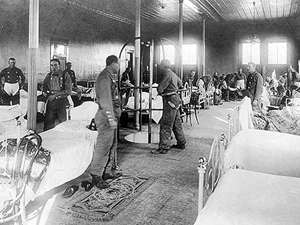Want to know what caused the Spanish flu epidemic of 1918? Do you know how many countries were affected by the epidemic? Our guide gives you the facts & information you want to know.
The Spanish flu epidemic of 1918 killed more people than World War I. It is known as the worst outbreak of an epidemic in the history of mankind. This epidemic is estimated to have killed from 20 to 40 million people since its initial outbreak. More people died to this disease in a single year than people died in the four years epidemic of the Black Death Bubonic plague. This was also known as “La Grippe” the influenza.
Spread of Spanish Flu Epidemic
The flu started in The United states and then it also appeared in Africa. It then spread across Europe up to France and soon spread across every corner of the globe. The cause of the Spanish flu was an unusually sever strain of A strain influenza virus. The victims of this virus were healthy young adults rather than the elderly or weakened patients whom influenza normally affected. This flu came in three different waves killing many millions of people in each wave. It even spread across to the pacific very rapidly due to its extremely high infection rate. The severities of the symptoms were suspected to be caused by cytokine storms.
Spanish Flu 1918
This Spanish flu epidemic affected more healthy young adults than the elderly and the sick. This is because the virus strain was caused a cytokine storm which excited the immune system in the body to a level where it destroyed the body. The immune systems that were strong were affected more as in the case of healthy young adults. While children and old people who had comparatively weaker immune systems were not affected to that great an extent. This research was later done by studying the tissue sample of the frozen victims and reproducing the virus. However, for a virus this dangerous, the study was being highly disputed by many authorities.
A number of towns in many parts of the world were completely wiped from the face of the earth due to this disease. Even in areas were death tolls were low, the people who were suspected of the illness were so many that everyday life in the society was coming to a halt. Many communities and stores required their customers to come in only if they were wearing a mask.





